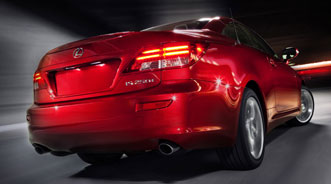J.D. Power: Initial Quality of Recent Vehicle Launches Slides Considerably

A total of just 10 automakers posted less than the industry average of 107 problems per 100 vehicles, a rate that has J.D. Power and Associates wondering about the trend quality of newly launched models every year from 2007 to 2010.
These assertions came courtesy of J.D. Power’s 2011 U.S. Initial Quality Study, which said the OEM that had the least amount of vehicle problems was Lexus. However, analysts assert in a report that’s been issued annually for the past 25 years that the initial quality of 2011 new-model launches has declined considerably.
J.D. Power acknowledged that overall initial quality improved as the average of 107 problems per 100 vehicles in 2011 was down from 109 PP100 a year ago. But reiterating, the firm said the initial quality of launch models — those that are all-new or have had major redesigns — worsened by 10 percent to an average of 122 PP100 in 2011 from 111 PP100 in 2010.
Conversely, analysts discovered carryover models — those that have had no significant redesign in the past year — have better initial quality than ever before. Owners of these vehicles reported to J.D. Power an average of just 103 PP100 in 2011, compared with 108 PP100 a year ago.
J.D. Power recapped that lower PP100 scores indicate a lower rate of problem incidences and therefore higher initial quality.
“Exciting models with the latest features are crucial for winning over today’s demanding consumers,” stated David Sargent, vice president of global vehicle research at J.D. Power.
“However, automakers must not lose their focus on the importance of these models also achieving exceptional quality levels,” Sargent continued. “Expected reliability continues to be the single-most-important reason why new-vehicle buyers choose one model over another, and no manufacturer can afford to give consumers any doubts regarding the quality of their latest products.”
J.D. Power discovered only seven all-new or redesigned models rank among the top three of their respective award segments, compared with 17 models in 2010, and only one launch model receives a segment award this year versus five launch models in 2010.
Furthermore, the firm determined just one-fourth of redesigned models perform better than the outgoing previous-generation model did in 2010, and eight all-new models perform above their respective award segment average.
2011 IQS Ranking Highlights
For the fourth year in a row, Lexus led the overall nameplate rankings; this time with 73 PP100 on average. The performance came to the delight of Jim Lentz, Toyota Motor Sales president and chief operating officer, who also saw Toyota jump in J.D. Power’s rankings to seventh overall.
“We are quite pleased with the quality improvements Toyota and Lexus have made over the last year and Lexus’ highest position overall in the 2011 IQS,” Lentz declared.
“We are committed to the quality and dependability of our products,” he continued.
Following in J.D. Power’s overall rankings were Honda (which improved to No. 2 from No. 6 a year ago.) Acura came next followed by Mercedes-Benz and Mazda, which climbed to No. 5 from No. 18 in the 2010 report.
The rest of the OEMs finishing better than the industry average were Porsche, Infiniti, Cadillac and GMC.
“We believe GMC’s initial quality performance and Yukon’s placement in its segment demonstrate GMC’s commitment to deliver high-quality, professional grade vehicles,” stated John Schwegman, U.S. vice president of GMC Marketing.
“We’re celebrating these accomplishments on the run as we continue to improve quality across our portfolio and exceed the expectations of our GMC customers,” Schwegman added.
J.D. Power also pointed out Land Rover posted the largest improvement in 2011, reducing problems by 47 PP100 from 2010.
Among leaders in specific vehicle segments, J.D. Power determined that Honda had the most individual top performers with seven segment leaders, including the Accord, Accord Crosstour, Civic (in a tie), Element, Fit, Insight (in a tie) and Ridgeline.
The amount of Honda vehicles honored was the most ever for the manufacturer.
“Creating products of the highest quality and value is the foundation of our business, and it begins with a deep understanding of the customer,” stated Tetsuo Iwamura, president and chief executive officer of American Honda Motor Co.
“These results are an important demonstration of our focus on the customer and the tireless efforts put forth by Honda associates throughout our organization — in R&D, in manufacturing and in sales — to exceed their high expectations of Honda and Acura,” Iwamura went on to say.
Lexus received four segment awards for the ES, GS, GX and LS models. For a second consecutive year, the Lexus LS has the fewest quality problems in the industry with just 54 PP100.
J.D. Power pointed out Chevrolet, Ford and Mercedes-Benz receive two awards each. Chevrolet receives awards for the HHR and the Tahoe; Ford for the F-150 and the Taurus; and Mercedes-Benz for the GLK-Class and the E-Class cabriolet/coupe.
Rick Scheidt, U.S. vice president of Chevrolet Marketing, noted “We believe the latest J.D. Power results reflect Chevrolet’s commitment to deliver high-quality cars our customers can depend on.
“We are working hard to make all Chevrolet models the highest-performing in their segments,” Scheidt continued.
Also receiving segment awards were the Cadillac Escalade Chrysler Town & Country Dodge Challenger and Mazda MX-5 Miata.
“Escalade’s highest-in-segment leadership showcases Cadillac’s commitment to our customers,” stressed Don Butler, vice president of Cadillac Marketing.
“We’re now focused on continuing and expanding our brand’s quality improvement in every segment in which we compete,” Butler added.
Among all-new and redesigned models, J.D. Power said the Hyundai Equus and Dodge Durango are notably strong performers, each ranking second in their respective segment.
“Having five vehicles rank at or near the top of their segments is the result of a lot of hard work and long hours dedicated to updating our product line,” explained Doug Betts, senior vice president of quality for Chrysler.
“Most automakers, including Chrysler Group, find it challenging to maintain quality levels when launching vehicles with a significant amount of new content,” Betts continued.
“It’s a big accomplishment for our employees and supplier partners to achieve these initial quality results when so many of our 2011 model year launches coincided with the IQS survey period,” he added.
In the past year, Chrysler mentioned it has launched 16 new or significantly improved vehicles.
“We’ve made steady gains, improving reliability by 58 percent in the past four years, according to our internal warranty data,” Betts said. “We still have more work to do as we continue to improve the quality of all our products.”
Ford’s Overall Performance Draws Reaction
What struck one industry analyst was how Ford’s overall score in J.D. Power’s report slide. While the Blue Oval still had two segment leaders, the automaker’s overall PP100 tally was 116, well below the industry average.
Edmunds.com senior analyst Michelle Krebs said, “Ford was not surprised by today’s results.”
Krebs went on to explain why the OEM expected to see its J.D. Power IQS score in that position.
“Ford knew that people were finding the MyFord Touch problematic,” Krebs insisted. “The engineers who designed the system are more technically inclined than the average user. Ford engineers need to take a step back to understand what is intuitive for the typical driver.
“Automakers are tweaking their engines and transmissions to maximize fuel economy, but their experiments have taken their toll in terms of the driving experience and quality ratings are suffering as a result,” she continued.
J.D. Power Digs Deeper into Software and Technology Challenges
As Krebs broached the subject, J.D. Power emphasized the decline in vehicle launch quality is evident in a number of areas, most notably the engine/transmission and audio/entertainment/navigation categories. Analysts believe they’ve pinpointed two primary causes for this quality decline:
—With high fuel prices and more stringent government regulations, automakers are designing engine and transmission software to make their models as economical as possible. However, this sometimes leads to the engine or transmission “hesitating” when accelerating or changing gears, and consumers this year are reporting this as a problem more often than in past years.
—Automakers are also accelerating the introduction of multimedia technology into their models, including hands-free and voice-activation systems. Many consumers are attracted by this type of technology, which is perceived to enhance convenience and safety, but some vehicle owners report that their system is not intuitive and/or does not always function properly.
“Clearly, consumers are interested in having new technology in their vehicles, but automakers must ensure that the technology is ready for prime time,” Sargent surmised.
“Successful companies will be those that can take this incredibly complex technology and make it reliable, seamless and easy for owners to operate while they are driving,” he continued. “There is an understandable desire to bring these technologies to market quickly, but automakers must be careful to walk before they run.”
While overall vehicle quality continues to improve, J.D. Power contends the introduction of new technology is expected to continue to pose challenges for automakers.
Overall problem rates for audio/entertainment/navigation systems in 2011 are 18 percent higher than in 2010 and 28 percent higher than in 2009, according to the report.
J.D. Power’s Assembly Plant Awards
Along with the IQS discussion, J.D. Power revealed three assembly plants received Platinum Plant Quality Awards resulting from a three-way tie for producing models yielding the fewest defects and malfunctions.
The winning plants included the Toyota Motor Corp. Cambridge South, Ontario, Canada, plant (which produces the Lexus RX); the Toyota Motor Corp. Kyushu 2, Japan, plant (which produces the Lexus ES, IS and RX); and the Honda Motor Co. plant in Greensburg, Ind. (which produces the Civic).
J.D. Power determined these plants average just 24 PP100. Plant awards are based solely on average levels of defects and malfunctions and exclude design-related problems.
In the Europe and Africa region, Daimler’s Bremen 1, Germany, and East London, South Africa, plants each received a Gold Plant Quality Award in a tie. The Bremen 1 plant produces the Mercedes-Benz C-Class, E-Class cabriolet/coupe and GLK-Class, while the East London plant produces the C-Class.
Study Background
J.D. Power emphasized its Initial Quality Study serves as the industry benchmark for new-vehicle quality measured at 90 days of ownership. The firm said its study is used extensively by manufacturers worldwide to help them design and build better vehicles and by consumers to help them in their vehicle purchase decisions.
“Initial quality has been shown throughout the years to be an excellent predictor of long-term durability, which directly impacts consumer purchase decisions,” analysts stated.
“The study captures problems experienced by owners in two distinct categories: design-related problems and defects and malfunctions,” they added.
The 2011 U.S. Initial Quality Study is based on responses from more than 73,000 purchasers and lessees of new 2011 model-year cars, trucks and multi-activity vehicles surveyed after 90 days of ownership.
The study is based on a 228-question battery designed to provide manufacturers with information to facilitate identifying problems and drive product improvement. The study was fielded between February and May.
| Nameplate | PP100 |
| Lexus | 73 |
| Honda | 86 |
| Acura | 89 |
| Mercedes-Benz | 94 |
| Mazda | 100 |
| Porsche | 100 |
| Toyota | 101 |
| Infiniti | 102 |
| Cadillac | 103 |
| GMC | 104 |
| Industry Average |
107 |
| Hyundai | 108 |
| Subaru | 108 |
| BMW | 109 |
| Chevrolet | 109 |
| Volvo | 109 |
| Chrysler | 110 |
| Lincoln | 111 |
| Audi | 113 |
| Kia | 113 |
| Buick | 114 |
| Jaguar | 114 |
| Ram | 114 |
| Ford | 116 |
| Nissan | 117 |
| Jeep | 122 |
| Land Rover | 123 |
| Scion | 123 |
| Mini | 131 |
| Volkswagen | 131 |
| Mitsubishi | 133 |
| Suzuki | 136 |
| Dodge | 137 |
Top Three Models Per Segment
Sub-Compact Car
—Highest Ranked: Honda Fit
—Kia Rio
—Hyundai Accent
Compact Car
—Highest Ranked: Honda Civic (tie)
—Highest Ranked: Honda Insight (tie)
—Toyota Prius
Compact Sporty Car
—Highest Ranked: Mazda MX-5 Miata
—Volkswagen Eos
—Volkswagen GTI
Compact Premium Sporty Car
—Highest Ranked: Mercedes-Benz E-Class Cabriolet/Coupe
Entry Premium Car
—Highest Ranked: Lexus ES
—Acura TSX
—Lexus IS
Midsize Premium Car
—Highest Ranked: Lexus GS
—Jaguar XF
—Mercedes-Benz E-Class Sedan/Wagon
Midsize Sporty Car
—Highest Ranked: Dodge Challenger
—Chevrolet Camaro
Large Premium Car
—Highest Ranked: Lexus LS
—Hyundai Equus
—Porsche Panamera
Midsize Car
—Highest Ranked: Honda Accord
—Subaru Legacy
—Toyota Camry
Large Car
—Highest Ranked: Ford Taurus
—Buick Lucerne
—Nissan Maxima
Compact Crossover/SUV
—Highest Ranked: Honda Element
—Honda CR-V
—Toyota FJ Cruiser
Compact MPV
—Highest Ranked: Chevrolet HHR
Entry Premium Crossover/SUV
—Highest Ranked: Mercedes-Benz GLK-Class
—Acura RDX
—Volvo XC60
Midsize Crossover/SUV
—Highest Ranked: Honda Accord Crosstour
—Dodge Durango (tie)
—Subaru Outback Wagon (tie)
Large Crossover/SUV
—Highest Ranked: Chevrolet Tahoe
—GMC Yukon
—Chevrolet Suburban
Midsize Premium Crossover/SUV
—Highest Ranked: Lexus GX
—Lexus RX
—BMW X6 (tie)
—Infiniti FX-Series (tie)
—Volvo XC70 (tie)
Large Premium Crossover/SUV
—Highest Ranked: Cadillac Escalade
—Mercedes-Benz GL-Class
—Lincoln Navigator
Large Pickup
—Highest Ranked: Ford F-150 LD
—Toyota Tundra
—Chevrolet Avalanche
Midsize Pickup
—Highest Ranked: Honda Ridgeline
—Nissan Frontier
—Ram Dakota
Minivan
—Highest Ranked: Chrysler Town & Country
—Honda Odyssey
—Dodge Grand Caravan

 View The Latest Edition
View The Latest Edition

